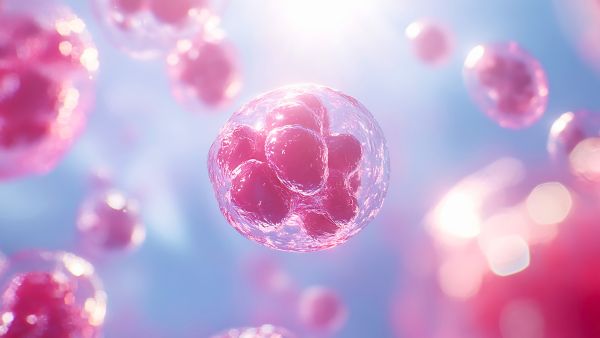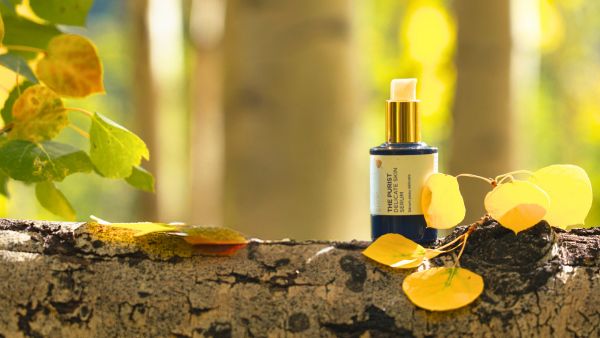Hidden Endocrine Disruptors in Skincare Linked to Breast Cancer

With October being Breast Cancer Awareness Month, and because breast cancer remains one of the leading health concerns for women worldwide, we wanted to take a moment to dive into some of the specific chemicals in skincare products that have been linked to breast cancer.
Research increasingly points to the potential role of endocrine disruptors—chemicals that can interfere with our hormone systems—as contributors to breast cancer risk. While these chemicals are pervasive in our environment, their presence in skincare and cosmetic products is of particular concern due to our direct and frequent exposure to them.
What are endocrine disruptors?
Endocrine disruptors are chemicals that mimic the hormone estrogen and can interfere with the normal function of other hormones in the body. This estrogenic activity may lead to an increased risk of breast cancer, as it can promote the growth of hormone-receptor-positive breast cancer cells and disrupt immune system function.
By being aware of potential endocrine disruptors and educating ourselves about these chemicals we can make safer choices for our health.
Below is a list of endocrine disruptors most commonly found in skincare products and their potential effects on the endocrine system. Print it out and take it with you next time you go shopping for beauty products so you know what ingredients to avoid.
6 Endocrine Disruptors to Avoid
-
Parabens
Parabens are known to mimic estrogen by binding to estrogen receptors on cells (1.). This activity can potentially contribute to the growth of hormone-receptor-positive breast tumors.
Ingredient Names: Butylparaben, propylparaben, isobutylparaben, methylparaben.
Found in: Shampoos, conditioners, lotions, face cleansers.
-
Phthalates
Phthalates have been shown to interfere with the hormone system and are linked to reproductive abnormalities (2.).
Ingredient Names: DEHP, DBP, DEP (among others); however, they can sometimes simply be listed as "fragrance,” these are synthetic fragrances.
Found in: Perfumes, moisturizers, eye shadows, nail polishes, shampoos, conditioners.
-
Synthetic Colors
Some synthetic colors are derived from coal tar, which may contain heavy metal salts that deposit toxins onto the skin, causing skin sensitivity and irritation (3.). While direct links between synthetic colors and breast cancer aren't fully established, any toxin that affects the skin and potentially the endocrine system deserves scrutiny.
Ingredient Names: Listed as "FD&C" or "D&C" followed by a color and a number (e.g., FD&C Red No. 6).
Found in: Hair dyes, eye shadows, eyeliners, lipsticks.
-
Synthetic Fragrances
Many chemicals that make up synthetic fragrances come from petrochemicals, which can interfere with the body's endocrine system (4.) and possibly contribute to an increased risk of breast cancer.
Ingredient Names: Often vaguely labeled as "fragrance" or "parfum".
Found in: Nearly all cosmetic and beauty products, from deodorants to lotions.
-
Sodium Lauryl Sulfate (SLS)
Sodium Lauryl Sulfate, also called SLS, has potential endocrine-disrupting effects, with some studies pointing to its ability to mimic hormones(5.).
Ingredient Names: Sodium lauryl sulfate, sodium dodecyl sulfate.
Found in: Shampoos, body washes, hand soaps, toothpaste.
-
Benzophenone
Benzophenones can mimic the hormone estrogen and may interfere with the function of other hormones, potentially promoting the growth of hormone-receptor-positive breast cancer cells (6).
Ingredient Names: Benzophenone, Benzophenone-1 (BP-1), Benzophenone-2 (BP-2), Benzophenone-3 (Oxybenzone), Benzophenone-4 (BP-4), Sulisobenzone.
Found in: Sunscreens, nail polishes, lip balms, hair sprays, shampoos, fragrances, and lotions.
The Path Forward
Awareness is the first step to prevention. By understanding the potential risks associated with these common ingredients, we can make informed decisions about the products we use daily. Opting for alternatives labeled as "free from" these chemicals or choosing organic, natural products can be safer routes to follow.
The Purist Delicate Skin Serum is our #1 choice for restoring health and promoting calm to a compromised skin barrier. Lightweight and free of fragrance allergens, essential oils, gluten, alcohol, and nuts, this velvety serum is the ultimate beauty potion to restore balance to irritated skin while fighting environmental aggression.
100% of the ingredients are from organic farming, wild-harvested, and/or natural sources, and free from harmful chemicals, preservatives, artificial colors, or fragrances.
Remember that the duration and frequency of exposure, along with individual susceptibilities, play a significant role in determining potential outcomes. It's essential to balance concern with pragmatism and do your best choose products you are educated about.
References:
- Darbre, P. D., & Harvey, P. W. (2008). Paraben esters: review of recent studies of endocrine toxicity, absorption, esterase and human exposure, and discussion of potential human health risks. Journal of applied toxicology, 28(5), 561-578.
- Serrano, S. E., Braun, J., Trasande, L., Dills, R., & Sathyanarayana, S. (2014). Phthalates and diet: a review of the food monitoring and epidemiology data. Environmental health, 13(1), 43.
- Scott, R. R., & Gutowski, S. M. (2014). Current concepts about chromogens, dye lasers, and pigmented lesions. Clinical dermatology, 32(4), 529-537.
- Steinemann, A. (2015). Volatile emissions from common consumer products. Air Quality, Atmosphere & Health, 8(3), 273-281.
- Schwartz, J. R., & Marsh, R. G. (1988). Sodium lauryl sulfate and triclosan: in vitro cytotoxicity studies with gingival cells. Toxicology letters, 41(3), 313-325.
- Kunz, P. Y., & Fent, K. (2006). Multiple hormonal activities of UV filters and comparison of in vivo and in vitro estrogenic activity of ethyl-4-aminobenzoate in fish. Aquatic Toxicology, 79(4), 305-324. ↩



